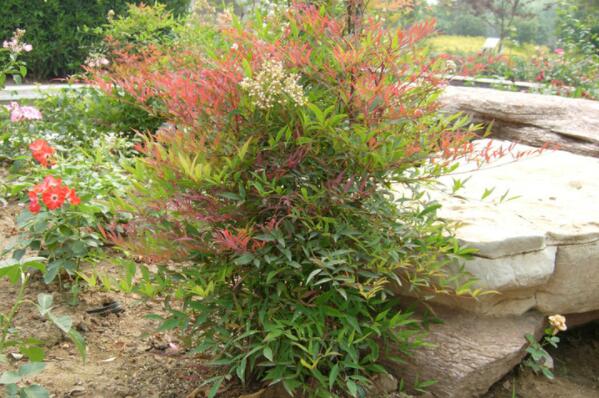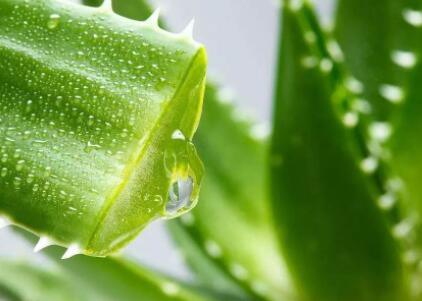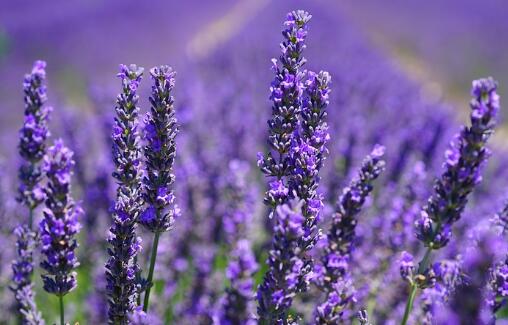Can the evergreen shrub Phyllostachys pubescens be fed in the north? How much is the seedling price? What are the planting methods? Attached
Southern bamboo alias Nantian Zhu, red quat son, candle son, red wolfberry, diamond yellow, Tianzhu, orchid bamboo, because of its superior and elegant shape, it is often used to make bonsai or potted plants to decorate windowsill, hall, meeting hall and so on. Can southern bamboos be fed in the north? How much is the seedling price? What are the planting methods? What are the effects? It is learned from the Jiangsu seedling base that the seedlings of Phyllostachys pubescens are about 0.6 yuan per tree in 1 cm, 1.2 yuan in 60 centimeters and 18 yuan in 120 centimeters.

Can Phyllostachys pubescens feed in the north?
Yes.
Nantianzhu likes to be warm and humid and widely adapts to the soil climate south of the Yellow River. Potted plants are still mainly planted in North China, and they have been cultivated in the open field in a few places, such as Wofo Temple in Xishan Mountain for many years. Therefore, it has a bright future in the courtyard with superior microclimate in the urban area of Beijing. Select the environment that can protect against wind and cold in winter, such as the basic planting under the wall foundation, the microclimate temperature can be higher than 3-5C in the open area; what is more important is to change soil and apply fertilizer, select good humic acid soil, can conserve water and fertilizer, and make the soil pH value reach neutral to weakening; don't be too exposed to the sun. If we can create such a small courtyard environment, Phyllostachys pubescens can survive the winter safely and grow healthily in Beijing.
What are the planting methods of Phyllostachys pubescens?
Reproduction method
Propagation is mainly sowing and ramet, and it can also be cut. It can be sowed with picking and sowing when the fruit is ripe, or in spring. Ramet should be carried out before sprouting in spring or autumn. The cuttings were carried out before the germination of new buds or when the growth of new shoots stopped in summer. Indoor maintenance should strengthen ventilation and light transmission to prevent the occurrence of shell insects.
Seed propagation
The seeds were collected in autumn and sown immediately after harvest. On the whole seedbed, trench was opened according to the row spacing of 33 cm, the depth was about 10 cm, and the seed was sown evenly. The sowing rate was 90,120kg per hectare. After sowing, cover the plant ash and fine soil and press it tightly. The seedlings grow slowly in the second year, so weeding, loosening the soil and applying light human and animal manure should be done frequently. From now on, we should pay attention to ploughing and weeding every year. Topdressing can be planted in the nursery after 3 years of cultivation. Transplanting should be carried out after the rain in spring. The spacing between plants and rows is 100 cm. Before planting, dig up the seedlings with soil. if you can't take a taxi, you must use thin mud pulp roots to survive easily after planting.
Ramet propagation
In spring and autumn, the clump-shaped plants were dug out, shook off the soil, and cut off from the weak combination of roots, with 2 or 3 stems in each clump, with part of the root system, and at the same time cut off some large pinnate compound leaves, planted on the ground or on the pot, and then blossomed and bear fruit after a year or two of culture.
Land selection and preparation
Choose sandy loam with deep, fertile soil and good drainage and irrigation. Neutral and slightly alkaline soils with good drainage on hillsides and flat land can also be planted. It can also be cultivated in edge and corner land. Before planting, it is made into a low bed or a high bed with a width of 120 cm to 150 cm.
Field management
Phyllostachys pubescens is suitable to use slightly acidic soil, which can be prepared according to the proportion of 5 parts of sandy soil, 4 parts of rotten leaf soil and 1 part of manure soil. Before planting, cover the pot bottom drainage holes with broken tiles, adding layers of charcoal is better, which is conducive to drainage and sterilization. In general, there is soil in the roots of plants. If there are broken roots, shredded roots, blackened roots or excess roots, they should be cut off, planted with soil according to the conventional method, and put in a shady place after pouring enough water. After about 15 days, the sun can be seen. Change the pot every 1-2 years, usually deduct the plant from the basin, remove the old culture soil, cut off most of the roots, remove the weak and short stem and dry shape, leave 3-5 plants, plant in the pot with culture soil, shade management, normal management after half a month. Phyllostachys pubescens is best preserved in semi-shady, cool and humid places. Under strong light, the stem becomes dark red, the young leaves "burn" and the adult leaves turn red; in very shady places, the stems and thin leaves are long and the plants are loose, which is harmful to ornamental value and unfavorable to fruiting. The suitable growth temperature of Phyllostachys pubescens is about 20 ℃, and the suitable flowering and fruiting temperature is 24-25 ℃. In winter, it is moved into the greenhouse, generally not less than 0 ℃. Ching Ming Festival moved out the following year.
The watering of Phyllostachys pubescens should be dry and wet. In dry season, the soil should be watered frequently to keep the soil moist; in summer, water should be watered once a day and sprayed on the leaf surface for 2 or 3 times to keep the leaf surface moist and prevent the leaf tip from becoming scorched and damaging its appearance. Flowering should pay special attention to watering, do not make the basin soil dry, and sprinkle water on the ground to increase air humidity, in order to improve the rate of pollination. The plant is semi-dormant in winter, so don't make the pot soil too wet. Watering time, summer season should be in the morning and late, winter should be carried out at noon. During the growing period of Phyllostachys pubescens, thin fertilizer is applied to fine seedlings about half a month (organic fertilizer with more phosphorus should be applied). Adult plants are applied dry fertilizer three times a year, respectively in May, August and October, and the third time should be fertilized when moving into the room for overwintering. The fertilizer can be fully fermented cake fertilizer and sesame sauce residue. Generally speaking, the amount of fertilizer application should be less in the first and second times, and the amount can be increased in the third time. During the growing period, cut off the sprouting branches and dense branches from the roots, cut off the branches with longer ears, and leave 1 or 2 lower branches to protect the beautiful plant type and facilitate flowering and fruiting.
In the first year after planting, weeding and topdressing were ploughed and fertilized in spring, summer and winter respectively, and the missing seedlings should be replanted at the same time. From then on, it will only be ploughed and weeded and fertilized once a year in spring or winter.
After planting for 4 ~ 5 years, some of the old stems can be cut in winter. After 6 or 7 years, the whole plant can be dug up, shake off the soil, remove the leaves, break the stem and root into thin slices, and dry them in the sun. Harvest and dry the fruit when it turns red or yellow and white from October to November.
Attached: the efficacy of Phyllostachys pubescens
Functional indications
Damp-heat jaundice, gastroenteritis, urinary tract infection, conjunctivitis, cough, wheezing, pertussis, food accumulation, diarrhea, hematuria, lumbar muscle strain.
Root and stem: clearing heat and dehumidification, dredging channels and activating collaterals. For cold and fever, conjunctivitis, lung heat cough, damp-heat jaundice, acute gastroenteritis, urinary tract infection, fall injury.
Fruit: bitter, flat. There's a little poison. Relieve cough and asthma. For cough, asthma, pertussis.
Time: 2019-04-09 Click:
- Prev

What are the potted plants suitable for growing indoors? How do you raise it?
In recent years, with the improvement of living standards, more and more friends like to raise some potted plants at home, such as aloe, green apple, gentleman orchid, rubber tree and so on, which not only greens the home environment, but also has a very good effect of purifying air. Comparable to air purifier. So, what are the potted plants suitable for growing indoors?
- Next

How to grow lavender after vanilla? When will it blossom? In which month does Yili lavender bloom?
Lavender is also known as perfume plant, spirit vanilla, vanilla, yellow vanilla, Lavender. Lavender is also known as vanilla. Very romantic lavender not only has high ornamental function, but also has high medicinal value. As a result, more and more Chinese people grow lavender. So how do you grow lavender?
Related
- Fuxing push coffee new agricultural production and marketing class: lack of small-scale processing plants
- Jujube rice field leisure farm deep ploughing Yilan for five years to create a space for organic food and play
- Nongyu Farm-A trial of organic papaya for brave women with advanced technology
- Four points for attention in the prevention and control of diseases and insect pests of edible fungi
- How to add nutrient solution to Edible Fungi
- Is there any good way to control edible fungus mites?
- Open Inoculation Technology of Edible Fungi
- Is there any clever way to use fertilizer for edible fungus in winter?
- What agents are used to kill the pathogens of edible fungi in the mushroom shed?
- Rapid drying of Edible Fungi

